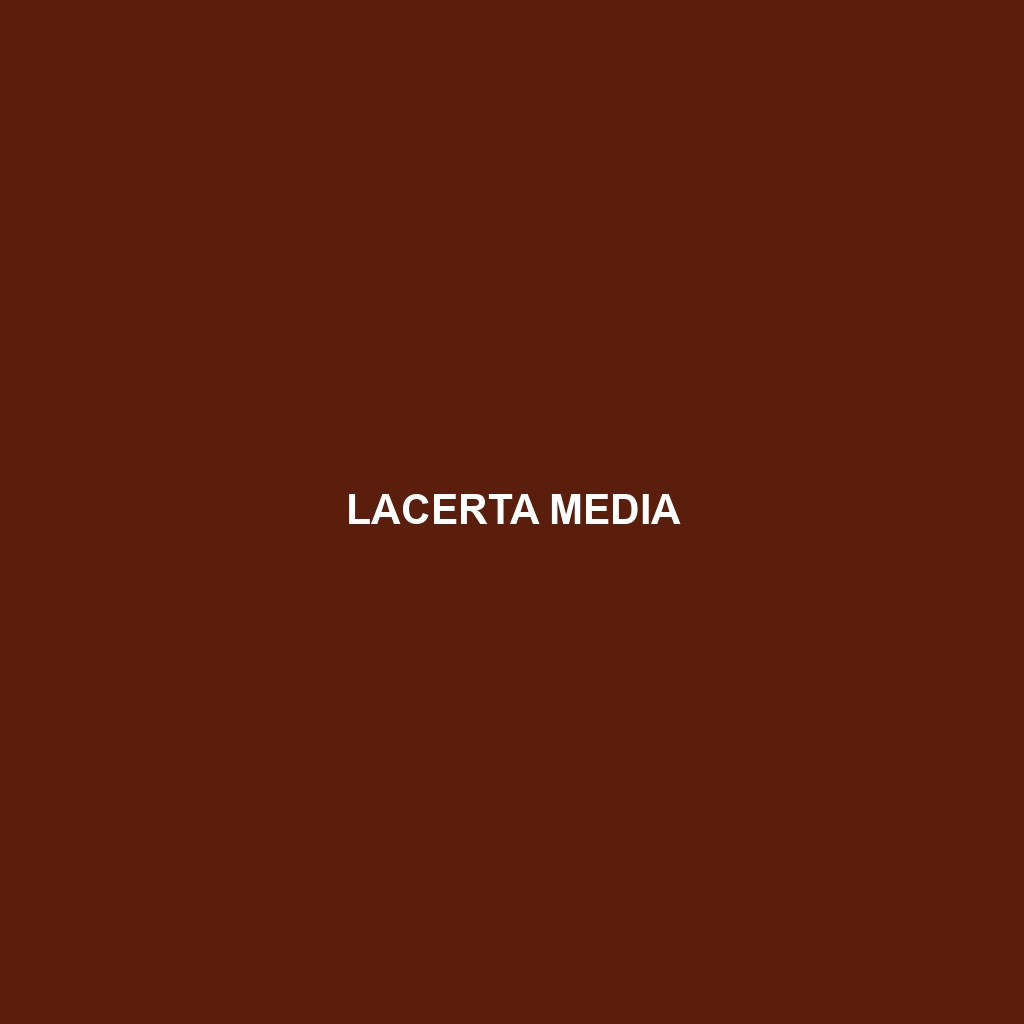Common Name
Lacerta media
Scientific Name
Lacerta media
Habitat
Lacerta media, commonly known as the Mediterranean lizard, thrives in diverse habitats primarily across the Mediterranean region. This species is typically found in temperate forests, shrublands, and mixed woodlands. Favoring warmer climates, Lacerta media often inhabits areas with abundant sunlight and vegetation cover. In addition to natural environments, these lizards are frequently spotted in disturbed habitats such as agricultural fields and urban green spaces. Due to their adaptability, they can survive in both dry and humid conditions, making them integral to various ecosystems, including coastal areas and even some savannas.
Physical Characteristics
Lacerta media exhibits several distinct physical attributes that set it apart from other lizard species. Adults typically range from 20 to 30 centimeters in length, featuring a slender body and a long tail that can be twice the length of their body. The coloration varies depending on the geographic location, but they are generally characterized by a mix of green and brown hues, often adorned with darker spots or stripes that provide camouflage within their habitat. Notably, their smooth, glossy scales enhance their ability to absorb heat from their surroundings.
Behavior
Typical behaviors of Lacerta media vary with the seasons, most notably reflecting their basking habits. These lizards are diurnal, primarily active during daylight hours, where they spend significant time sunbathing to regulate body temperature. Social interactions are common during the mating season, where males display vibrant colors and engage in courtship rituals to attract females. They are known for their territoriality, and males often engage in aggressive displays to defend their space. While they are primarily ground-dwellers, Lacerta media display remarkable climbing abilities when evading predators.
Diet
Lacerta media is classified as an insectivore, relying predominantly on a diet of insects for sustenance. Their feeding habits include consuming a variety of arthropods, such as crickets, beetles, and caterpillars. Occasionally, they may also consume smaller fruits and plants, indicating a slight omnivorous behavior. The foraging method involves active hunting, utilizing their keen eyesight to stalk and capture prey swiftly. This diet not only supports their energy requirements but also plays a significant role in controlling insect populations within their habitat.
Reproduction
The reproductive cycle of Lacerta media generally commences in spring, as temperatures rise and environmental conditions become favorable. Males engage in elaborate courtship displays, showcasing their vibrant colors and competing for the attention of females. After mating, females lay clutches of 4 to 12 eggs in sandy or loose soil, with a gestation period of approximately 30 to 80 days, depending on environmental conditions. Hatchlings emerge fully formed and are independent from birth, showcasing behaviors similar to adults. Parental care is minimal, as the female typically leaves the eggs shortly after laying.
Conservation Status
According to the IUCN Red List, Lacerta media is currently classified as Least Concern, reflecting its relatively stable population status across its native range. However, habitat destruction due to urbanization, agriculture, and climate change poses potential threats to this species. Conservation efforts are essential to ensure the continued survival of Lacerta media, particularly in areas experiencing significant environmental changes. Awareness campaigns and habitat restoration initiatives are critical to mitigating the risks faced by these lizards.
Interesting Facts
One interesting fact about Lacerta media is their remarkable ability to regenerate their tails after losing them, a survival adaptation that enables them to evade predators. Additionally, some studies suggest that the lizards possess a unique behavioral trait known as autotomy, where they can intentionally shed their tails to distract predators, genuinely highlighting their adaptability and resilience.
Role in Ecosystem
Lacerta media plays a crucial role in the ecosystem as both predator and prey. Their dietary habits help regulate insect populations, contributing to the overall health of their habitat. As a prey species, they serve as a food source for various larger predators, including birds and mammals. Their presence is indicative of ecological balance, as they interact with multiple species within their food web, establishing themselves as a vital component of the Mediterranean ecosystem.
